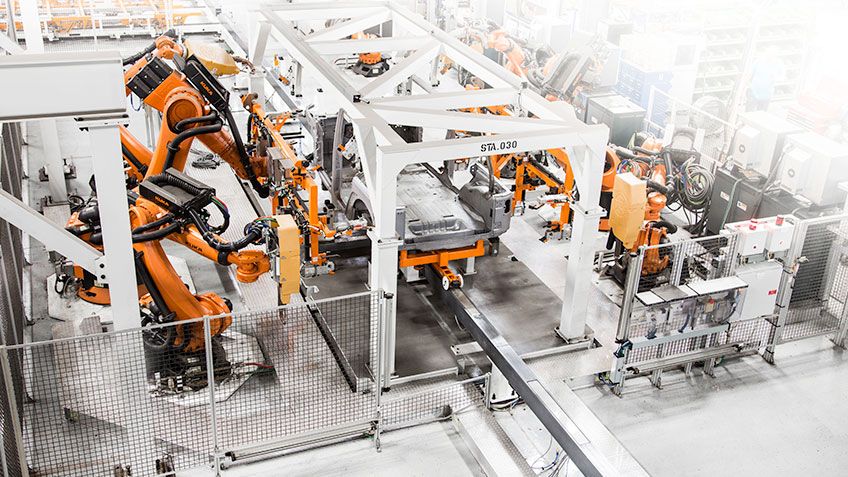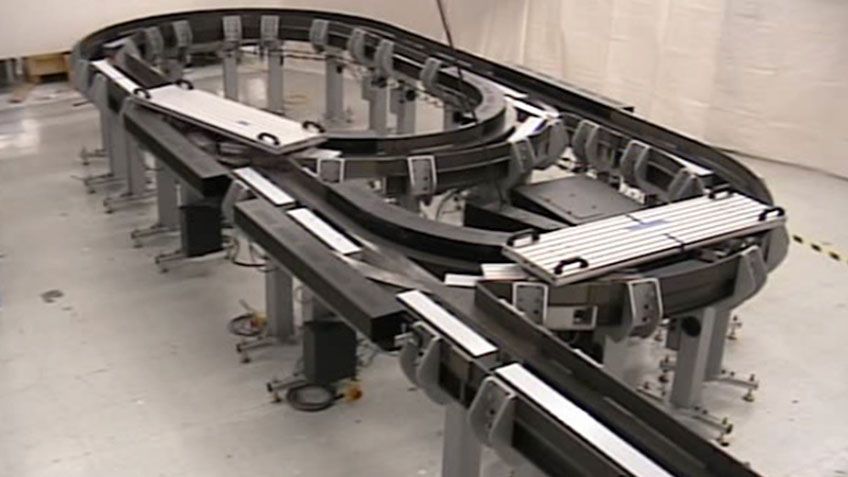The automotive industry continues to evolve rapidly. Consumers want the latest features and styles, and vehicles are becoming more advanced, better connected and ‘smarter’ to address the market requirements. This means regular refreshes to incorporate the latest automotive safety, fuel efficiency, performance, designs and options.
Auto manufacturers need to gain the flexibility and speed required to produce multiple models and variations to meet changing consumer demands. To meet these requirements, automakers are implementing the latest smart automation technologies.
KUKA Systems North America, part of Germany based KUKA AG, is an international supplier of engineering services and flexible automation systems for the Automotive, Aerospace, Energy and Industrial Solutions segments. In the automotive industry, KUKA’s portfolio includes the entire manufacturing automation spectrum for joining and assembling vehicle bodies.
From production facilities with low levels of automation to highly flexible manufacturing systems, from the manufacture of individual subassemblies to the assembly of complete bodyshells and add-on parts, KUKA prides itself on being masters of automated and semi-automated car body production.
The lead engineers at KUKA evaluated the standard automation systems used in auto manufacturing facilities – most of which are 25 years old and haven’t seen major improvements in over 15 years – and saw an opportunity to create a system that would significantly improve the way cars are built. KUKA was looking for an alternative to the industry standard that would be flexible, efficient and cost effective.
Turning the Vision into Reality
KUKA wanted to develop a system that would bring significant change to auto manufacturing and significant benefits over legacy systems. The engineers at KUKA wanted to create a true game changing technology. When turning their vision into reality, KUKA turned to MagneMotion’s QuickStick HT Independent Cart Technology.
When Kevin Laurence, director of KUKA’s PULSE division, discovered MagneMotion’s QuickStick HT Independent Cart Technology he commented, “For the first time, I found a product that we could use as building blocks. All other products we looked at didn’t have the necessary power or were one off designs that were too expensive and not flexible enough.”
These alternative products were not viable options for the automotive industry where projects need to be completed in less than a year. QuickStick HT’s inherent ease of use and flexibility allowed KUKA to simply configure a solution to fit their needs and timeframe.
Less is More
Comprised of a linear motor and separate drive, QuickStick HT uses integrated position sensing to enable independent control of separate carriers on a track. Accelerations, decelerations, velocities and positions are programmable. Instead of moving at a fixed speed, vehicle body sections can quickly advance through robotic workstations as process steps are completed.
As a rule, “less is more” in industrial applications. Fewer system components typically result in a simpler design, better performance and easier maintenance. Compared to conventional roller-bed and trolley systems, first generation KS PULSE systems reduced the number of unique components from 200 to 14. Performance gains were equally impressive.
Fast forward a few years, with advancing bandwidth and communications protocols – the latest release features significant enhancements enabled by improved QuickStick HT capabilities, starting with the network architecture and communication protocol.
The initial offering was hardwired and based on node controllers using RS-422 serial communication. The updated product features Ethernet-compatible node controllers – and takes advantage of the network’s higher bandwidth.
“Hardwired RS-422 communication has its limits, and it is not typically used in our industry,” Laurence said. “Our latest KS PULSE system, built on EtherNet/IP, has more capacity – and uses a protocol that is familiar to system integrators.”


